Podcast transcript: The power of smart ports
Read the full transcript for this episode of the IT Pro Podcast
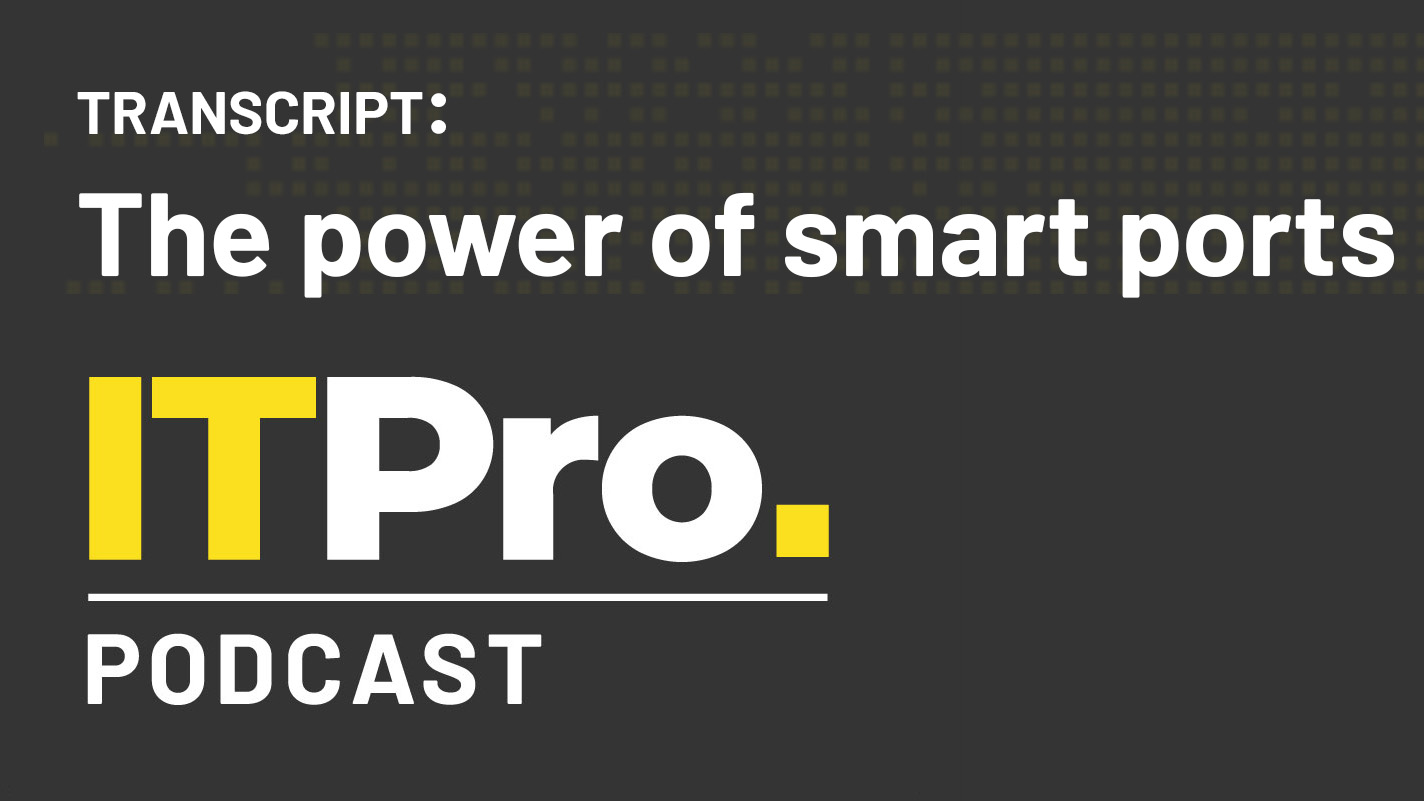
This automatically-generated transcript is taken from the IT Pro Podcast episode ‘The power of smart ports'. To listen to the full episode, click here. We apologise for any errors.
Rory Bathgate
Hello, I’m Rory Bathgate
Bobby Hellard
And I’m Bobby Hellard
Rory
And you’re listening to the IT Pro Podcast. The internet of things can leave firms feeling all at sea — which is why this week, our first port of call is smart ports.
Bobby
Using the newfound speed of 5G networks, and more sophisticated local networks than ever before, a number of smart port trials are ongoing worldwide. By tracking movements of cranes, crates and transport equipment, metrics such as operational speed and maintenance needs can be tracked in near real-time to inform management decisions and use of resources.
Rory
In today’s challenging economy, and with the looming climate crisis, it’s essential that the supply chain can be maintained at low cost, and with as little carbon footprint as possible — all this could be leveraged through smart ports.
Bobby
With logistics hubs and technology largely failing to keep pace, it is more important than ever that IoT devices, image recognition and connectivity is used to improve efficiency. Joining the show this week to discuss all things smart ports is Andrew Quinton, Senior Manager/Principal Architect of 5G solutions at BT.
Sign up today and you will receive a free copy of our Future Focus 2025 report - the leading guidance on AI, cybersecurity and other IT challenges as per 700+ senior executives
Rory
Andrew, it’s a pleasure to have you on the show.
Andrew Quinton
Thank you for having me.
Rory
So I had the pleasure of hearing you talk at Connected Britain 2022, and just right off the bat: at the conference, you said that some ports are completely disjointed in the UK. Could you give a brief overview of the kind of supply chain issues that ports and logistics hubs are currently facing?
Andrew
Yeah absolutely. I think it's important to know a lot of ports are managed as independent businesses. They’re not a government organisation, they're not run by central groups of the handful of key operators. And what we see is a lot of the ports themselves operate in their own ecosystems, but they engage with much wider economies and much wider operators beyond their gates and their fences. So, whether it's the ships and the boats, and the maritime agencies coming in, or whether it's the freight forwarders and the trucks going in and out, or just the cargo and who that cargo belongs to, and where it’s destined for. They're all independent islands and silos operating within a port environment. So it can feel, with these different organisations and different agencies, quite disjointed at times from a technology perspective.
Rory
So on that point, are smart ports a matter of improving existing systems, or is it a case of identifying where systems that don't currently exist could be implemented?
Andrew
Yeah, I think it's a bit of both actually Rory. I mean at the end of the day, smart ports and ports themselves are widely important. At the end of the day, close to something like 95% of all of our trade goes through our ports in Britain. So there is a lot of cargo with a lot of items, there's a lot of people that travel through our ports on a daily basis. I think when it comes to technology, we need a slightly more modernised view. I think you know, the vast majority of ports, 80% of ports continue to operate your manual legacy solutions, they’ve got a lot of old equipment, and these are critical maritime services. And so, what we've seen over the last, I'd say the last two or three years, and certainly with the pandemic as well, we've seen projects and programs perhaps five years, five years in the making have been shortened down to just months. So a real acceleration of transformation and technical strategies with imports environments themselves. And we've seen this with an absolute shift, to things like connectivity, and 5G, IoT, like you said at the start of the session, that's the start. I think ports themselves can do things at start themselves, and the middle, but longer term we've got to start seeing how technology and the advancement of port operations expands to other organisations. What I mean by that is, if you're a freight forwarder, or a maritime ship operator, when your assets, your trucks, your boats, your ships, when you arrive at a smart port, or a port 4.0, how do your systems interact? At the minute, it’s kind of clipboard and paper-based trails. So how do those systems interact, and how can what freight forwarders and cargo operators do interact with the smart port environment. And how can a smart port environment cater for those different environments, different businesses, different ways of working? So we do see that as a challenge. But as I say, we are seeing a lot of traction with ports around the UK. There is a real desire from within port operators and businesses to modernise, and really focus on, I think three things: they're looking for efficiencies clearly, you know, in a competitive environment and it's an increasingly competitive environment. Efficiencies are always important. I think transparency, and transparency can be two things, that could be data transparency. So just starting to understand how the port operates. What's coming in? What's coming out? How long are the cranes running for? Everything from energy consumption to where the people are deployed, to really understand data and make data let decisions. But also things as well, transparency of things, transparency of assets, transparency of cargo containers, people as products, all of that is really important. But also on top of that, people areas like health and safety and the colleague environment. That's the third thing, that's really important to smart ports, that they're trying to address in parallel to those two other areas
Bobby
So, AI computer vision has been singled out by BT as a technology with the potential to revolutionise smart ports and transport hubs. What is it about image recognition that makes it so useful within smart ports?
Andrew
Well, that's a really good question. So, you know, digital vision from BT is an area of computer vision that I hold close to my heart. I've spent the last 12 to 18 months working with computer vision operators, and starting to really look at how AI-enabled video can help a variety of different industries with smart ports especially. When it comes to computer vision there are almost two ends of the spectrum. There's a people, and traffic kind of spectrum. And this could be ranging from very basic, very important, things like health and safety, PPE compliance. Yeah, that sort of thing, is really, really important to ports, for the safety of people on them. It could be traffic. We've seen examples of course in the Middle East that have deployed AI-enabled video to start to understand traffic profiles across their site, because what they found is traffic built up at certain points of the day, certain directions, and that was having a knock on effect. So ships were being delayed from being unloaded successfully, and a whole host of issues can start to start to occur with those very sort of basic issues, such as traffic. So people and traffic, that one end of the spectrum, but it goes right across to the other end of the spectrum when we start to look at objects, whether that's villagers, whether that's water quality, whether that's… we're looking at things like drones, and being able to inspect cranes. We've seen some examples with turbines, where drones can inspect the quality and look for fractures and issues around objects on turbines. It can be a whole range of different active different areas. We're also seeing examples with OCR technology, and checking on cargo containers and just tracking the whereabouts. We've seen ports where they're unloading containers from RORO ferries, and they're having to store them, and that's quite an intensive area for them because it takes a lot of land, and land’s a vital asset of any port. So being able to effectively stack cargo containers, or trailers with containers, and being able to understand and locate them quickly using things like OCR technology is really important. So AI across that spectrum, from people, to traffic, right across the objects to check out damage. All of that is, you know, super important and what we see as a real big potential use case for digital vision, for computer vision, in a smart port environment.
Rory
That's really interesting. It sounds like especially with OCR what we're seeing here, is a technology that can be implemented to allow vision over things like crates, without having to then have the suppliers adopt that technology as well. Especially if you're reading characters on the side of, a container for example, you don't need things like trackers on every container. So, do you think that solutions like computer vision can improve the supply chain from end-to-end with minimal footprint?
Andrew
Yeah, absolutely. I mean, it takes a bit of sort of, pan supply chain adoption and things, but I think giving people visibility — I talked about transparency earlier — giving people transparency of where their assets are, where their containers are. Obviously, you know, there are drawbacks, and then, you know, a lot of containers have seen better days, it's not always easy to read them, but there are specialist AI organisations, that can help with that and looking at OCR containers. So it's not foolproof by any stretch, but it starts to build that picture, starts to give that level of transparency and visibility at key points. And I think, just taking that a step further, we talk a lot about transparency of where your assets are. So whether it's containers, or pallets, or just items you’ve ordered in the post, that’s been around for quite a while now, if you order something online it can probably tell you it's three stops away. So understanding where assets are across the supply chain isn’t a huge advancement. And there are still improvements to be made, absolutely, but where our thinking is at the moment is, actually how do we take that the next step further and start thinking about secure supply chain, and the impact on my business? What I mean by that is: if I know that I got a shipping container, and it’s just arrived at one of the UK ports, that's great/ I know my containers are there, I know my objects are there. But actually, if I need them to be on the M4, or on the M1, or in my warehouse by now, because they’re running late, I need to understand what the knock-on effect is to my organisation and my business. Have I got stock? Do I need to source something short-term? So it’s starting to take that supply chain visibility, starting at ports, but then really focusing on how it can impact your business, and actually having that all within the cloud, within an AI-enabled system to provide business with that information that allows them to make meaningful decisions and quickly. That's, a big step forward where we see supply chain visibility and asset transparency going.
Bobby
So, how would that work with other companies that are waiting for their goods to come across? Because they would need to be able to access that system, wouldn’t they?
Andrew
No absolutely, a lot of this, a lot of this hangs on organisations being willing to come together and share data. And the first step as we talked about, is getting that data off of paper, off that clipboard. I was at a port recently, and it's a fantastic environment, you know, and it's always on the go. But it starts off with trucks arriving at the gate, and there's a chap on the gate who writes down the registration number, gives them a little ticket, and tells them where to go. And actually, one of the most expensive elements of that isn't actually the chap handing out the tickets, actually the pieces of paper and the triplicate books that you used to be able to get, they're really hard to come by apparently. But actually just having, you know, thousands of pages of these little bits of paper being handed out every year, I mean, you can see where things like ANPR systems with computer vision can help direct traffic with digital signage. You can see straight away where there's, there's opportunities there to improve and allow that chap then to be, you know, positioned elsewhere. There is a skill shortage right? There is a shortage of people, this is not about displacing people, this is about using technology to augment the staff and resources that we've got to really make that difference. But any technology at any start has to be shared across multiple organisations, with the data as well, it's going to be vital. And I think that's probably one of the bigger hurdles we’re going to come across. But then we are starting to see advancements with freeports, and we are starting to see organisations come together in circles of trust. And it's really interesting to see how technology can start to support those environments, where you see multiple organisations, including the government, whether it’s HMRC or the relevant agencies start to share data across these environments. So there’s definitely a desire, there's definitely a start, and I think we’ll start to see more and more of that continue.
Rory
Fantastic. So, more generally, do you think the UK is in a place right now where the network can support, let's say, a plethora of smart ports, smart hubs, or is more 5G infrastructure needed first?
Andrew
Yeah, it's a really interesting question. I think when you're talking about the environment that we're seeing in ports, where you've got a lot of metal things, whether it's areas where containers are stored, whether it's cranes. Hey, guess what? Those things that float in on the ocean are made of metal too, so there's quite a lot of metal in those environments right? So, actually, whereas public 5G, and public cellular connectivity could play its part, what we’re seeing actually is a real desire to focus on 5G private networks, and genuine 5G standalone networks. And I think then, when you plan and design them effectively, you will start to see the benefits of 5G in a port environment that perhaps on its own, the public cellular network couldn’t really do on its own. It's also important to note as well, that no two ports are the same. And there isn't a one-size-fits-all solution for ports. We've seen that, you know, automating container ports, with sensors and crane management, that's a very different proposition to cruise ship terminals and ferry terminals, where perhaps you need more high speed Wi-Fi, and public cellular connectivity for video calls and general consumer conversations. But there are 5G applications as well: for example, we've seen at ferry terminals and cruise ports where you know, hundreds of pallets of supplies are loaded, there's barcode scanning. There's a lot of to-ing and fro-ing with data, 5G has a part to play there as well. But definitely no, no ‘one size fits all’ for a port environment when it comes to private 5G. But planned effectively, it is a really, really fantastic technology to put in a smart port. And we’re seeing some really great examples. Port of Tyne recently is going through a transformation now, with us, with private 5G. And they see the 5G network as a real opportunity for a test bed, and innovation platform for organisations to come and start to test what they hope is the sort of next wave of technology. To utilise all the good stuff that comes with 5G, you know, well-documented things around the high bandwidth, the lower latency, but there's more exciting things to come with 5G. We've only really hit the tip of the iceberg.
Bobby
Before long, you'll have 6G to work with.
Andrew
Absolutely, yes. Let's figure out 5G first. Yeah, I do see. You know, I do see a lot of commentary around 6G as well, and Wi-Fi, and all that good stuff. But yeah I think 5G, certainly private networks especially, we’re just starting to see the benefits of them, and actually there are a lot of exciting things that we can do today. And that's the other thing: 5G, private 5G, it's unlocking really exciting technologies today. You know, I've seen examples of augmented reality, I've spoken to a number of operators of AGVs, you know, automatic guided vehicles. A real acceleration of technologies that have always been on the fringes, but are now really being unlocked with 5G, and in particular private 5G, in smart ports.
Rory
So the leading edge of some of this technology almost, outside of the consumer eye, it's really being pushed on a logistics level.
Andrew
Absolutely. I think it's really interesting actually, out of a lot of different verticals and industries we're seeing quite a lot of interest and take up from port operators in 5G and private 5G. And that is, primarily, because of the use cases that they unlock. We don't typically go and deploy a private 5G network just for connectivity’s sake. No one really deploys private 5G to connect laptops up. It doesn’t work from a business case perspective. However, when you start to look at the use cases that it unlocks, that ranges, as I said, earlier from things like AGVs, right through to asset tracking, or augmented reality. All of those things start to provide efficiencies, transparency, and then, health and safety benefits to organisations. And at that point there’s a tipping point, that we see the business case really start to come into its own and provide that return on investment.
Bobby
So, what kind of real-time or near-real-time insights can those who implement these systems expect to see?
Andrew
So it's all about data. I think one of the really exciting examples I've seen recently, is one of the projects we did on the East Coast. And it was deploying IoT sensors across of a variety of different platforms. There were quite modern cranes, from the last sort of two or three years, but there were other cranes that were from the 1960s and still going strong. And again, they were being sweated, long into the future. And there's trucks, there's hoppers, there were forklifts, there's RTGs (rubber tyre gantries), a whole host of different things that you can connect IoT sensors to. And in this particular example, we connected them up to a lot of cranes, trucks and warehouses. And what we started to see and what we were able to demonstrate for the customer, was a real in-depth view of how their port operated. They started to see where cranes were running, and how often they were running, and how much cargo they were moving. Where the trucks and the lorries were parked, or where have their engines running, waiting for a birth to become free. And they started to look at things really, really basic things, but really crucial to port operations, such as hydraulic temperatures and pressures, AdBlue levels. And they were starting to make decisions, and get ahead of the curve, in terms of what they could do with this data. You know, when do they need to top up the fuel tank? When do they, you know, when do they need to top up the AdBlue tank? Actually, you know what, between 12 and 12:30, 1 o'clock, the cranes tend to be on a downtime because the chap’s probably having a break, or there's a break in the schedule and there isn’t a ship birthed at that moment in time. So lots of data coming together, on our data exchange, our IoT platform, started to give insight to how their port was operating. And it's the only when you start to take data from a crane, from a truck, from a warehouse and start to pull that together. So you start to get meaningful pieces of data, from that. You start to understand how these different disparate parts of your operation impact each other, and that leads to real data-led decisions there, which is super important for efficiencies, and through that real-time data collection.
Rory
And on a macro scale, you're talking about data insights, you mentioned earlier that no two ports are the same. Do you think that based on that IoT devices can be deployed more generally to improve efficiency, let's say in between different transport hubs, or will each solution need to be quite carefully tailored to individual site needs?
Andrew
Yeah, I think it's the latter. I think you've got to look at individual sites, and individual use cases, and tailor the solution. The actual IoT sensors themselves, are you know, they're really clever things. Yeah you can, you can attach them to a variety of different environments. I mean, we put sensors on 1960s cranes, and we made them much smarter in terms of the data they're able to provide. So the sensors themselves are fairly flexible, whether you're using them for inventory management or asset tracking, or just things like asset geofencing, and where is it? Where is it on your location? The sensors themselves are fairly standard, common items, but it’s only when you start to understand an actual customer, an actual port environment, and what’s important to them, do you really start to tailor a solution. And as I say, no two ports are the same. Some ports are very focused on people, passengers; some are, you know, fish terminals they deal with fish. So things such as refrigeration temperatures and reefer units, that's really important to them. Being able to make sure that the cargo is stored, and handled, in a correct environment. And actually, you know what, refrigeration and temperature’s probably, a really, really good example of a piece of data that you would actually want to start to see across the supply chain. So, as soon as you know, something’s caught, and brought ashore, and processed, obviously it'll be refrigerated and kept correct. As soon as it’s loaded into a truck, again the refrigeration, the temperature, all of that is really, really important. And I think as a customer and I'm not talking necessarily about a consumer, this could be a supermarket for example, or a fish wholesaler. Having an understanding that, end-to-end, that the fish that you're bringing in has been correctly stored at the right temperature is really important. I think another huge example where temperature, and which we've seen this very recently, which is hugely important, is for vaccines. And we've seen this at airports for example, where we've, I spoken to a freight forwarder organisation at Heathrow recently, and they are involved in moving some of the Covid vaccines that needed to be fairly chilled, for want of a better word. And, you know, the moment it arrives in their warehouse from the truck, the moment they load it onto an aeroplane, and then even when it moves from one aeroplane to another because you know, quite often they're not end-to-end, the temperature, the condition is vitally important to make sure that you know that vaccine is is kept correct. So, really good, example of a piece of data that, you know, it's not that hard to collect through IoT, through sensors. And there are still a lot of clipboards, and paper and manual checking your temperatures I've seen, but that's a really good example of end-to-end data being used in a specific use case for specific environments. So yeah, a combination of the two Rory, I’d say.
Bobby
So can IoT campus solutions address the logistical issues across the UK, or internationally, or do they simply offer localised efficiency improvements?
Andrew
I mean, clearly there is localised benefit, yeah. But I think what we seeing is, when it comes to supply chains in general, they're all heavily interlinked. When goods arrive from the ship to the being unloaded, to being taken on the road and delivered to a customer, or a manufacturer, or wherever they go, that whole process is a hugely interlocked in a lot of different ways, whether it's coal for a power station, for example, or whether it's cargo containers for the construction industry, these are all industries that rely on closely-knitted, secure supply chain environments that are very much interlinked. And I think with IoT and with technology, as we talked about, I think bringing those closer together will help those end users immensely to plan their business, plan how they operate. So, yeah, you know, I think in short that those things can bring efficiencies, they can bring benefits to the end-to-end supply chain, and indeed the businesses that consume them. And of course, there are going to be local efficiencies, whether that's through the level of automation, or teleoperation we've seen, that we can bring. Local ports, and local environments can enjoy those efficiencies too.
Rory
And in terms of bringing in efficiency for localised areas, aside from the implementation of hardware, we've talked about network load a bit, but is the implementation of a network that's capable of handling that amount of data load, is that something also something of a stumbling block, particularly in areas with a lot of legacy architectures? Shall we say like, clipboards? It is a lot of the groundwork there really setting up a system that can handle that kind of data load?
Andrew
Yeah. No, I absolutely there is, I said earlier, I think 80% of ports continue to rely on manual, legacy, you know, systems. And a lot of paper, a lot of clipboards. What we do see with IoT and the platforms that support them, and including the connectivity with 5G, there is the ability to handle large amounts of data, very, very quickly, and process that data and come up with some sort of decision on the back of it. And so the actual technology itself is good, you know, it's available now, we've seen some great deployments and we've seen some good benefits for customers. I think the challenge that we face, we talked about earlier around sharing data between different players in the industry, that’s clearly one. But very much basic is getting that data digitised, that whole digitisation journey is the process of how you move to the IoT world, the 5G world. It’s bringing the people with you as well. You know, it's really, really important that people are on the journey with this. What we found is processes and systems in port environments have evolved. They've evolved over many, many years of lots of really experienced people. They're not predictable environments. They can be quite, you know, they're noisy. They can be quite dangerous at times, there’s a lot of activity happening. And so the people that stitch those processes together with paper has grown over time. And so it's really, really important that when you look at these environments, and speak to the people, you start to understand, really how those environments actually work. And I think that is the real challenge. We, recently visited a port where we were looking at teleoperation of some heavy plant, and it's only when the actual operator of the heavy plant, who was one of the tenants on-site, came down to see us that they really started to give us a much detailed insight on how their operation actually worked, and actually how we could then tailor the technology and the solution around it to meet their needs. It's only when you really sit down and speak to people, and really start to understand those processes that you can effectively plan solutions that are actually gonna do what they say on the tin. And I think that's really important for any engagement report, or any environment, the technology is great, you know, the IoT and the 5G. It is very capable, it is very exciting, but it starts with that digitisation journey with people, and understanding what the sort of as-is current environment is at any given time. So that's really important.
Bobby
Just going back to something you mentioned earlier about drone use. Is that something becoming more popular in ports?
Andrew
Yeah, no, absolutely. Drone use in ports is growing, definitely. We're seeing, we actually ran a trial on South Coast recently, with one of the port operators, and they found using drones and deploying them really, really useful. I think when it comes to drones, there were three major areas of operation, or useful business cases. One of them was around port operations and we saw examples, whether that is inspection, which is what I talked about earlier. The biggest area around inspection is rust, you know, these environments are next to the sea, right? And a lot of metal, and a lot of seawater and fresh sea air, rust will appear in areas that is quite hard sometimes to see. So drones looking for things, like rust, was really important. Just things like moss and vegetation, and just you know general upkeep of buildings is a big task on these big warehouses, so that inspection piece was really important. We've also seen drones being used in place of people for, we've seen hoppers, for example, if they've gotten jammed or issues, where typically some all have had to go in and had a look and not a particularly nice, safe clean environment. But drones can start to understand, or start to look at where issues are. We’ve also seen quite exciting cases around 3D assessments. And so when ships are unloading or perhaps loading, you can use drones to do a bit of a 3D hold assessment, start to understand shipping capacity. And again, that's quite a new innovative use of drones. So port operations and drones is really important. I think the second area though is around the sort of policing and security, and two really, really clear, examples around, whether it's the sort of maritime and land surveillance piece, whether it's security on site. But we're actually seeing opportunities to use drones for search and rescue operations as well, which is hugely important. Being able to use drones, and work with other blue light services, during those search and rescue missions has been really useful to see. I think the final thing is around property, and property maintenance. It's a little bit like what I talked about with operations and inspection but, sometimes when ports are expanding, or they're building, getting overhead area imagery typically has been something they've had to get third parties in to start to understand how the port environments evolved over time. So I think property and indeed marketing, you know, they want to do some marketing material, all of those types of use cases and more in fact, we're seeing with the use of drones. And I think they're going to start to grow as the use of drones becomes, you know, we see that more and more. So very much operational security and indeed, just helping the operation move forward, is where we see drones being used in ports,
Rory
Great. Andrew, thank you for being on the show.
Andrew
Brilliant. Thank you for having me, really enjoyed it, and thanks very much.
Rory
You can find links to all of the topics we've spoken about today in the show notes and even more on our website at itpro.co.uk.
Bobby
You can also follow us on social media, as well as subscribe to our daily newsletter.
Rory
Don't forget to subscribe to the IT Pro Podcast wherever you find podcasts. And if you're enjoying the show, leave us a rating and a review.
Bobby
We'll be back next week with more insight from the world of IT but until then, goodbye.
ITPro is a global business technology website providing the latest news, analysis, and business insight for IT decision-makers. Whether it's cyber security, cloud computing, IT infrastructure, or business strategy, we aim to equip leaders with the data they need to make informed IT investments.
For regular updates delivered to your inbox and social feeds, be sure to sign up to our daily newsletter and follow on us LinkedIn and Twitter.
-
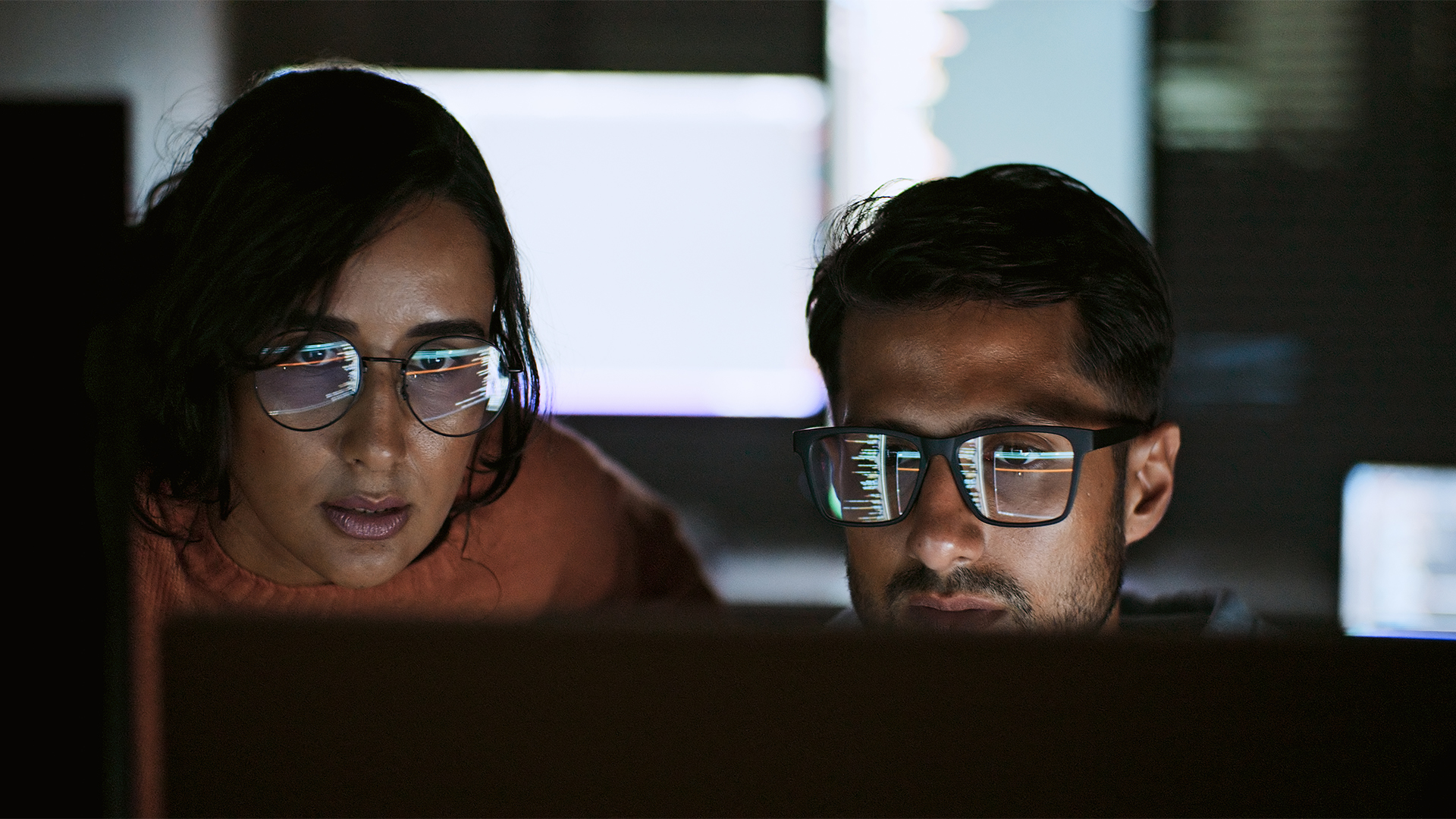 The NCSC touts honeypots and ‘cyber deception’ tactics as the key to combating hackers
The NCSC touts honeypots and ‘cyber deception’ tactics as the key to combating hackersNews Trials to test the real-world effectiveness of cyber deception solutions have produced positive results so far
-
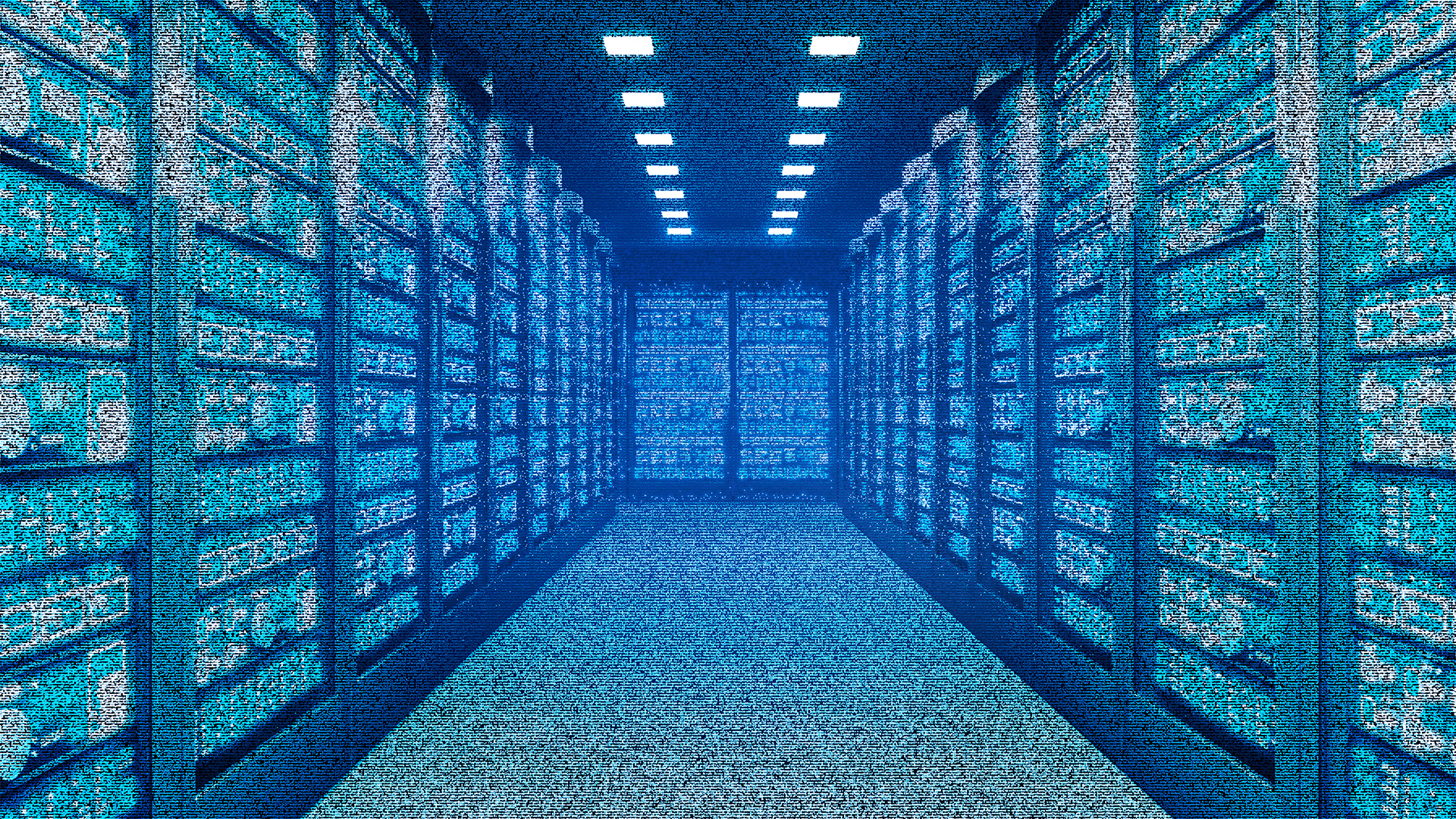 Can data center supply keep up with AI demand?
Can data center supply keep up with AI demand?News New research from Goldman Sachs points to a precarious balancing act for data center operators
-
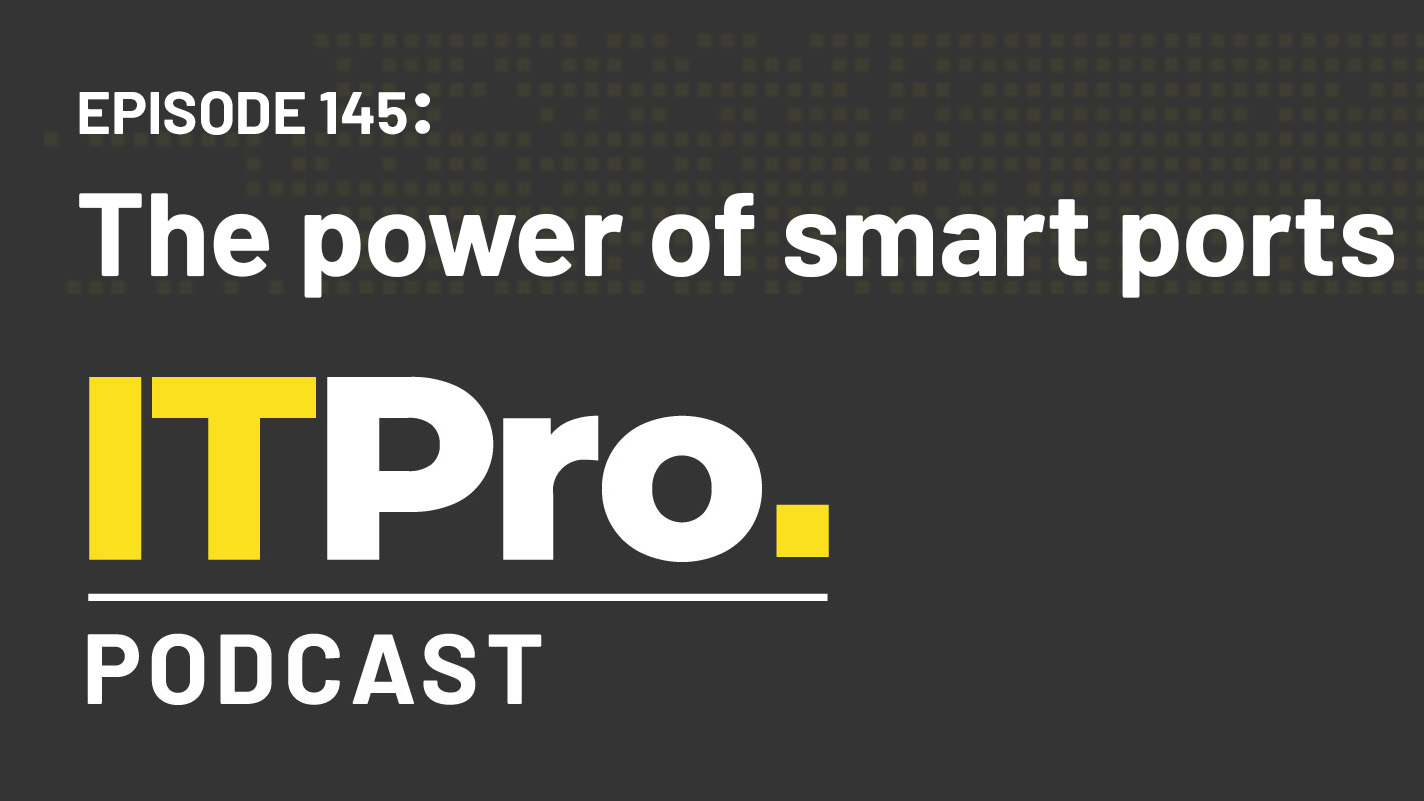 The IT Pro Podcast: The power of smart ports
The IT Pro Podcast: The power of smart portsIT Pro Podcast For a healthier supply chain, businesses need greater data insight
-
 Five Eyes leaders issue guidance for MSPs to prevent second SolarWinds attack
Five Eyes leaders issue guidance for MSPs to prevent second SolarWinds attackNews The joint advisory published today said MSPs and customers need more vigilant in the wake of Russia's invasion of Ukraine
-
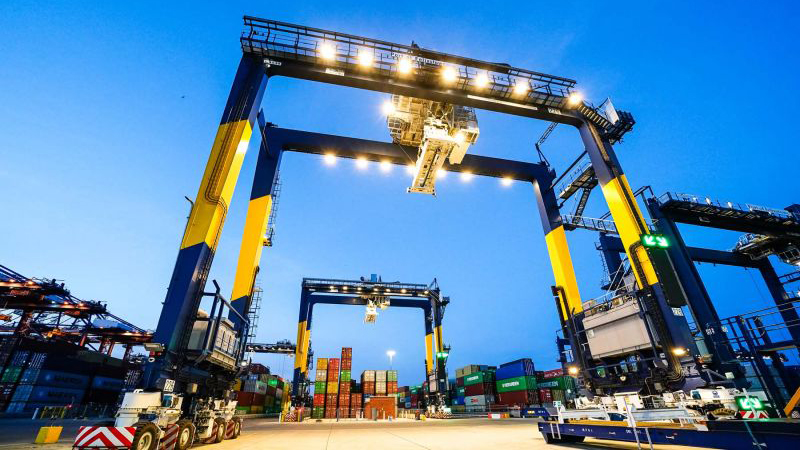 UK’s largest port to deploy 5G and IoT tech
UK’s largest port to deploy 5G and IoT techNews Felixstowe Port will use 5G-enabled Internet of Things (IoT) sensors to predict maintenance of the port’s quay cranes
-
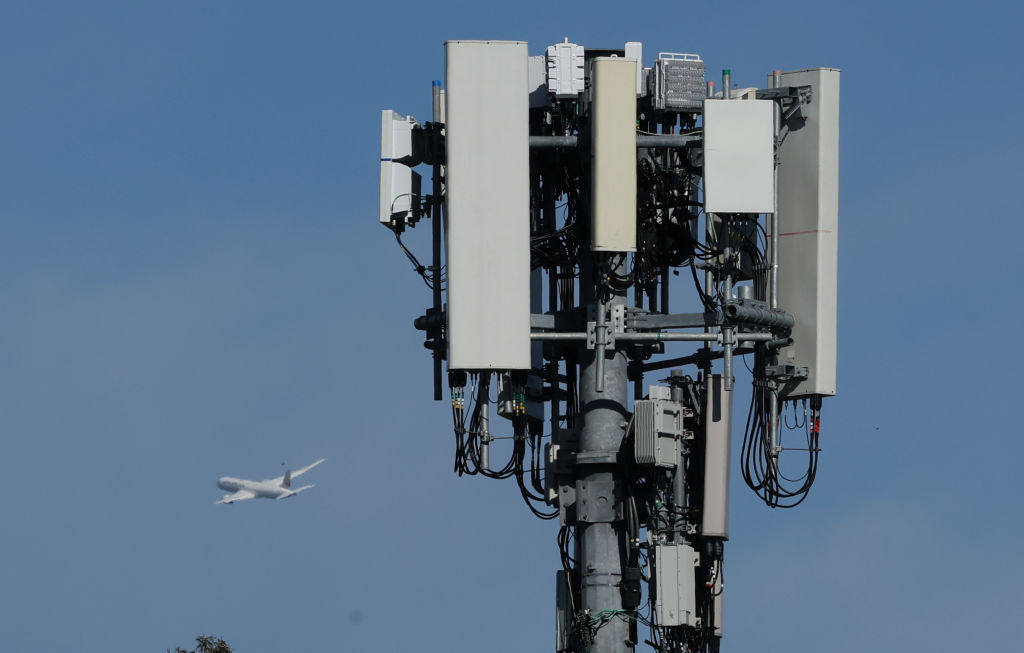 AT&T and Verizon agree to postpone 5G rollout at US airports
AT&T and Verizon agree to postpone 5G rollout at US airportsNews President Joe Biden thanked Verizon and AT&T for agreeing to the delay
-
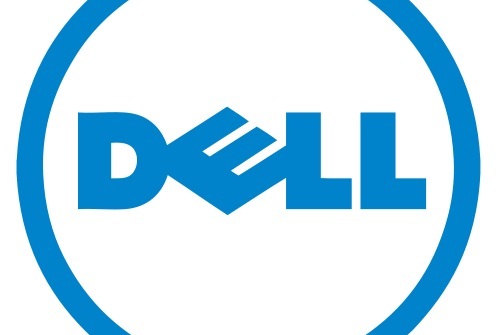 Dell misses revenue expectations despite storage boost
Dell misses revenue expectations despite storage boostNews Compellent may be a serious boon to Dell's profits, but the company's growth remains stunted by public sector and consumer weaknesses.

